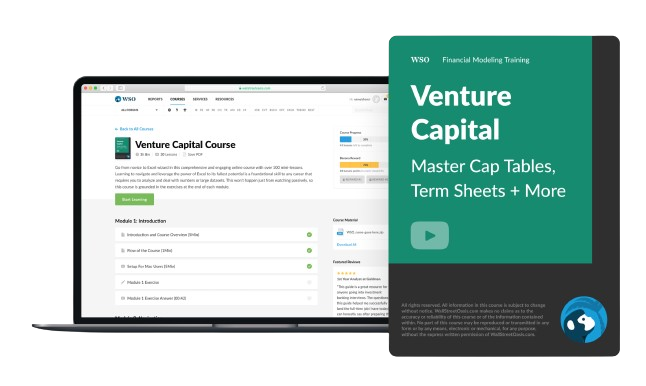Corporate Venture Capital
Refers to the investments made by established corporations in startup companies
What is Corporate Venturing?
Corporate venturing (a.k.a. corporate venture capital) refers to when a large corporation invests in startup companies. This process is somewhat similar to venture capital but has a few key differences.
Corporate venture capital, by definition, is the investment of one (larger) firm into another (smaller) external firm. The key is that the firm must be external to the company providing its capital.
The companies being invested in are often small and creative startups. The corporate venture capital process is utilized by companies that may not be as agile as the smaller firm or whose cost of development is greater than the value of the firm they are purchasing.
In this process, the large corporation doesn't just lend money; they actually buy a share of the smaller company's ownership, meaning they have a stake in the business.
After becoming a stakeholder in the business, they might also offer loans, but it's essential to have that ownership stake for it to be considered corporate venture capital. Besides financial support, these big corporations might provide assistance in marketing, strategic planning, and general business management. They could also offer additional funding through loans or more equity.
The companies that get acquired through corporate venture capital are typically in their early growth phases, which can benefit greatly from substantial investments and support. The main point here is that both the big corporation and the smaller business gain from this collaboration.
Over the past decade, corporate venture capital has become increasingly popular due to various factors in the larger business environment.
Key Takeaways
-
Corporate venture capital involves larger corporations investing in smaller external firms, often startups, to gain strategic benefits and access to innovative technologies.
-
CVC strategies include driving, enabling, emergent, and passive approaches, each focusing on different strategic advantages. CVC offers both ROI potential and strategic benefits to both the investing corporation and the startup.
-
CVC funds can invest in various stages of a startup's development, ranging from early-stage to IPO. The investment timeline and goals vary depending on the startup's growth and strategic alignment.
-
The CVC deal process involves deal origination, pitching, valuation and due diligence, final offer, and closing. Each step is crucial for evaluating and executing investments in startups.
Venture capital Vs corporate venture capital
Venture Capital (VC) and Corporate Venture Capital (CVC) are two different investment approaches, both focused on smaller firms and startups. While they share some similarities, such as seeking capital gains and expertise in specific markets, they differ significantly in their objectives and methods. The table below provides a concise comparison of VC and CVC, highlighting their key differences.
| Aspect | Venture Capital (VC) | Corporate Venture Capital (CVC) |
|---|---|---|
| Investment Stage | Early-stage (Series A or B) startups | Flexible; not limited to specific funding rounds |
| Primary Goal | Generate lucrative returns | Create strategic benefits for both companies |
| Equity Exchange | Equity stake in the startup | May acquire equity or other strategic assets |
| Investment Horizon | Typically 5-10 years | Varies, often with a focus on long-term gains |
| Portfolio Risk | High failure rate for portfolio companies | Risk may vary based on the nature of the deal |
| Ownership Structure | Multiple Limited Partners (LPs) or General Partners (GPs) | Single corporate entity |
| Capital Volume | Usually, VC manages more capital | CVC manages less capital than traditional VC |
| Investment Approach | Aim for profitable exits | Emphasis on strategic business benefits |
| Continuity | VC funds have a fixed lifespan (usually around 10 years) | Most CVC funds are evergreen, allowing for ongoing investments |
how does Corporate Venturing work?
We have already discussed, in summary, what corporate venture capital is, and how it differs from traditional venture capital. But how does it work, how do businesses invest, and what is the process for investing?
Corporate venturing can be broken up in a few different ways:
- Methods in which CVC activities are performed
- CVC investment strategies
- Stages of financing
The methods in which CVC is performed refer to how the investment is conducted. The chosen method of CVC affects how the company is integrated into the buyer's portfolio. The selected method of CVC activity also determines how well a strategy can be executed.
The purpose behind the investment drives an investment strategy. What are the goals by the end of the investment timeline, and what benefits are required? For example, does the company want to integrate the technology, or is the goal to turn a profit?
Lastly are the stages of finance. A company can be in various startup stages where CVC would still consider investing. What does it mean to be in each scene, though?
Each company and deal will have a preference for which tools are utilized. Ultimately, the goal will be to receive some financial aid so that we will conclude the financing process.
Corporate Venturing Methods
Corporate venturing can be executed in one of three methods:
1. Classic venture capital
With this model, the idea is relatively simple. The primary concern is generating a positive return on investment. CVC funds do this by investing in an industry where they have the expertise and can effectively speculate on which brands and technologies will be successful.
Another key to the success of the fund is related to consulting. The corporation has expertise in the field, so they not only have a better chance of understanding which businesses will be successful, they can offer management assistance to improve the odds of a venture's success.
2. Venture client
This model is a great way to mitigate the risk of getting involved in venture capital. Using this method, investors put money into joint projects with startups. These projects run their course, and small and large companies benefit from working with each other.
The large business can gain insight into the new innovative ideas of a small firm, while the smaller firm can gain seasoned insights from the large company, and both share in the profits of the project.
There is no exchange of equity with this model. So the trade-off is that there is no direct benefit from the growth of the startup firm. This limits the timeframe and total potential ROI compared to investing directly into a startup.
The most significant benefit, however, is the reduction of risk. We mentioned earlier that venture capital has a higher rate of failure. However, by not having a direct stake in the business, its loss has limited effects on the giant corporation.
3. Acquisition
This final method can come around after either of the above, or a company can get straight into this method of CVC investment.
In this case, the company will try to acquire the entire (or a controlling share of) the startup firm. This potentially yields some of the most significant benefits to the firm and great flexibility in divesting the investment.
Like the classic venture capital model, the business can be sold down the line once it has grown. But on the other hand, the company can be held onto and even merged into a giant corporation.
The benefits range from simply growing and harvesting the investment after it has grown to developing synergies between the businesses and helping both firms further grow their business lines.
What are the Value-Added Benefits of CVCs to Startups?
We are looking at the themes we have covered thus far. There are two clear main benefits that CVC funds seek in their investments, ROI and strategic advantages.
A few different strategies place different levels of importance on either benefit.
Strategies can be directed in one of four directions:
- Driving
- Enabling
- Emergent
- Passive
1. Driving
Both businesses have similar operations in the same industry in this strategic direction. The most significant benefit from this is furthering strategic advantages for both firms. The smaller firm will have better access to capital, and the bigger firm will have access to the innovative products and ideas of the smaller firm.
The difficulty of executing this strategy is the reinvestment of needed capital. Since all investments must fall in the same strategic direction, vetting companies might lead to realizing many firms are not a proper strategic fit.
To keep the fund alive, they may also be required to sell old acquisitions/investments to further drive the key strategy behind the investments.
2. Enabling
This is an investment into smaller firms that operate differently than the investor but may exist in similar or complementary fields.
The strategy involves the synergies that can be developed by both firms working together. For example, one firm might exist up or downstream from the buyer.
If downstream from the investor, the corporation can gain access to sell directly to their customers, saving time and money. If upstream, this could lead to more robust pricing control, a competitive edge in production capabilities, etc.
3. Emergent
These investments are not directly linked to a specific strategy, but the two businesses may operate in similar spaces.
The general idea revolves around creating agility for the buyer. If their strategy changes, the business's investment in that space becomes a valuable tool for pivoting. These investments will vastly increase in value to the firm if this happens.
This strategy also allows the firm to be at arm's length from a specific market segment and test the waters, even if that market is not directly within the scope of the business. The strategy can change and adapt to the new market if it is a good fit for the giant corporation.
On the downside, this may still require a significant investment, and many investments may never prove helpful aside from the cash flows they generate.
4. Passive
These investments are unrelated in strategy and operation. They seek financial returns without any significant consideration of design. These transactions are almost similar to a private equity transaction.
What Stages of a Startup do CVC Firms Specialize In?
We mentioned that there is no particular stage at which CVC funds might choose to invest. It ultimately depends on strategy and risk tolerance for the firm. With that said, there are a few different stages of financing which may be considered for investment.
1. Early-stage
Although CVC funds might not formally participate in seed rounds that often, some of the businesses they invest in might be in similar situations to companies raising their source round.
At this stage, the company needs startup capital to begin its operations. They may have access to some money, but new companies often do not have the cash flow to cover all areas of operations.
The CVC fund can provide capital to assist with:
- Marketing
- Product development
- Manufacturing
- Etc.
2. Seed stage
When companies formally participate in seed-stage VC, the process may become more formal, and the corporate venture capital fund may participate in funding alongside angels and VC funds. The budget itself will also be used to aid in covering operating expenses.
3. Scaling finance
This generally would refer to the series A through to C rounds of funding, perhaps D and beyond, but this is uncommon.
At this stage, the startup seeks financing to propel the business further along its development. The startup will be looking to:
- Further marketing strategy and execution
- Build up their team and hire more employees
- Expand product and/or service offerings
- Refine and update the business plan, operations, etc.
4. IPO
At this stage of financing, many CVCapitalists are seeking to exit. For example, suppose they have received their desired benefit from working with the startup. In that case, they may seek to harvest additional capital by taking their exit and selling their share of the business to reinvest into another startup.
5. M&A
This means merging the business with the owner of the CVC fund. This is the best option for the strategic benefit and technically can occur at any stage, even post-IPO, but this is not typically the case. Often this is a late stage where the company is still privately owned.
Financing process of Corporate Venturing
How does the deal flow look in corporate venturing? It is similar to the private equity deal timeline, but we will briefly summarize the process.
1. Deal origination
The company may be searched out by someone on the deal origination team for the corporate venture capital fund. On the other hand, the corporation may be reached out to by an investment bank through a teaser, or the corporation might be contacted directly by the startup.
2. The pitch
Meeting with management and the startup founders may take time if the corporation is interested. This is the management and founders' opportunity to try and sell the idea that their business is unique and worth investing in.
3. Valuation and due diligence
At this stage, there will be some exchange of information and communications. Finally, a rough estimated business value may be prepared along with a preliminary offer to buy the firm.
There will also be some preparation and budgeting in case the deal goes through, and lawyers and consultants are needed to close the deal.
4. Final, binding offer
Once much of the information has been dissected, and there is some consensus on what the buyers and sellers are looking for from the transaction, a final, binding offer will be submitted, which the management can accept or reject.
5. Closing
At this stage, this is essentially just "crossing your ts and dotting your Is." Lawyers will draft contracts, each party is signing for their conditions, and afterward, the deal is considered closed. The CVC fund has successfully taken an equity stake in the business.
Researched and authored by Brandon Fausto | LinkedIn
Free Resources
To continue learning and advancing your career, check out these additional helpful WSO resources:




or Want to Sign up with your social account?